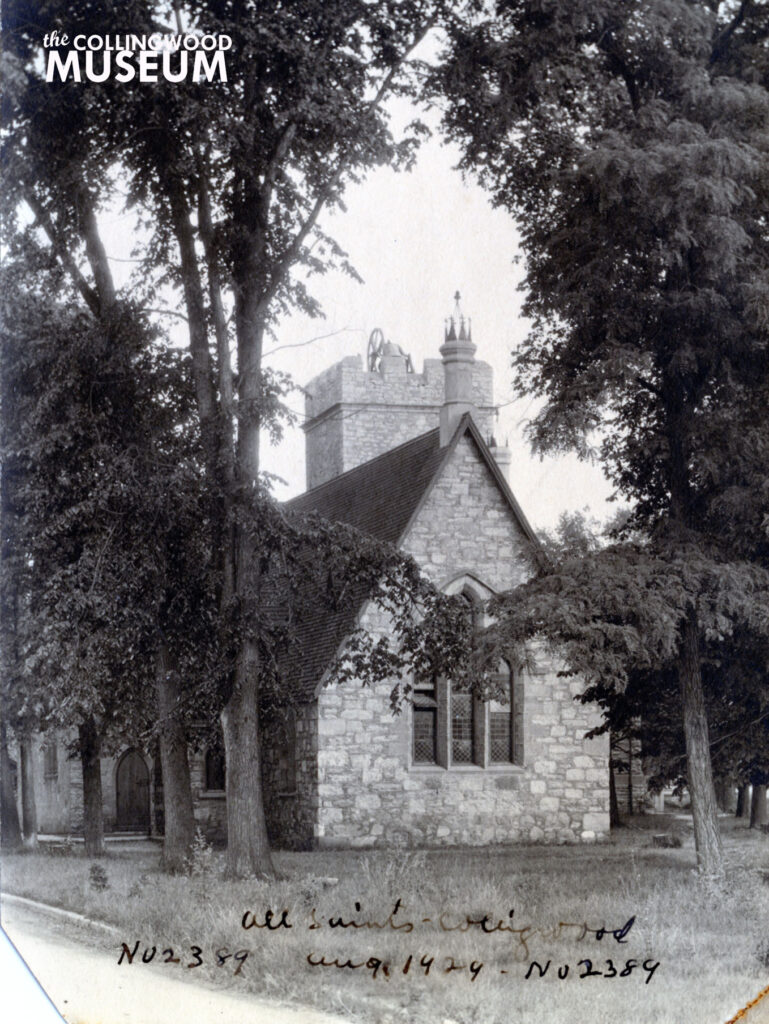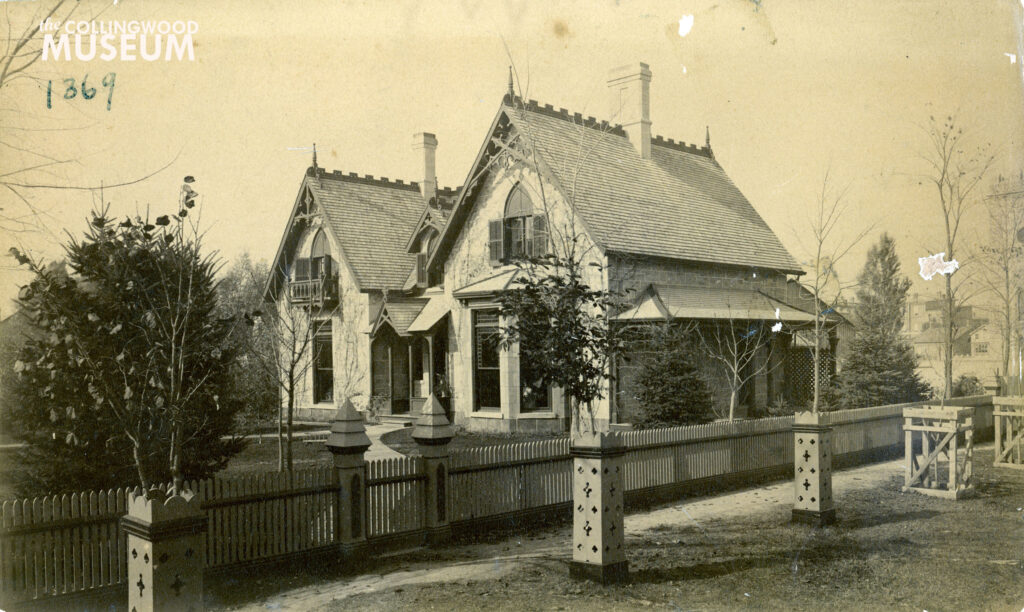Our History

Collingwood Museum Collection, X970.350.1. All Saints Anglican Church, view looking north, 1929.
Our history
From Tavern Services to the Establishment of a Permanent Sanctuary
In 1855, two years after settlement began in what is now the town of Collingwood, a few members of the “United Episcopal Church of England and Ireland”, as it was then known, met for worship on the upper floor of a tavern on the northeast corner of Hurontario and Ontario Streets.
There, for a short time, services were conducted by the Reverend Dr. John Langtry who had been given responsibility for establishing the church in the western part of Simcoe County and the adjacent area of Grey County.
When a fire destroyed this building, services were held in several locations until 1856 when a frame structure was erected on the west side of Cedar Street between First and Second Streets. This building was known as “Trinity Episcopal Church” and served the growing congregation for two years.
Driven by Vision and Faith
The Devotion of Six Parish Pioneers in 1858
Construction of a new and larger building was made possible when the McMaster Estate gave the north portion of the land between Ste. Marie and Elgin Streets as a gift to the parish.
Here on a more centrally located lot, the stone building which continues to serve as the nave of the present church was erected in 1858.
This was possible was due to the vision and faith of Dr. A.R. Stephen, William Basil Hamilton, George Moberly, Charles MacDonnell, John Hogg and Charles Gamon, six locally prominent men of the parish who mortgaged all that they had in order that the Church might be built.

Collingwood Museum Collection, X970.362. All Saints Anglican Church Rectory, c. 1900.
A Storied Legacy: All Saints’ Collingwood
152 Years of Faith, Heritage, and Architectural Brilliance
At the first Vestry Meeting, Dr Langtry was given the honor of naming the new church, which he called All Saints’. The church was formally consecrated on August 11th, 1867.
In 1876 the church building was expanded to include transepts, chancel, sanctuary, and bell tower. Not long after, the remaining portion of the land bounded by Elgin, Ontario and Ste. Marie Streets was acquired and the beautiful stone rectory was built. The present parish hall and the connecting vestry were built in 19ll to serve the needs of the expanding congregation. These changes and additions completed the church complex as we see it today; considered by many as the finest example of such work outside of the City of Toronto.
Over its long history, the church has been enhanced by a number of memorials, including magnificent stained glass windows, white oak organ case and marble font as well as unique brass pulpit and lectern, a beautiful and distinctive altar and a dramatic relief carving of “The Last Supper”.
In 2002, the bell tower and the parish hall underwent extensive restoration of the exterior stonework, while major renovation was done on the interior of the parish hall. A new entrance was constructed on Elgin Street. The parish and church of All Saints’ Collingwood, with a profound respect for its past, looks forward to its future, secure in the knowledge that is story was and will continue to be “From Generation to Generation: 152 Years of Faith.”
Cemetery Board
Ron Emo, Jim Scott
To look after the administration of the cemetery for the parish of All Saints’. To maintain and care for the cemetery property and sell plots as required.
Archives
To collect, organize and preserve the records of the life of All Saints’ Anglican Church
